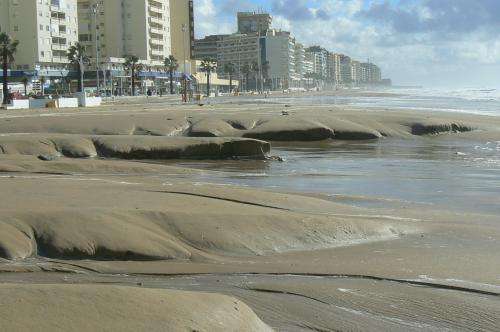A study determines that the Gulf of Cadiz is an area prone to suffering from flooding and coastal damage

Reasearchers at the University of Cadiz have carried out a study that establishes the atmospheric conditions responsible for the generation of extreme meteorological events in the Gulf of Cadiz, which can cause flooding and significant damage to the coastline. In the study, published in the scientific journal Climate Dynamics, a possible increase in the vulnerability of coastal areas is considered, due to variations in marine storm patterns, together with an increase in coastal occupation. This situation of risk is related to the state of the sea level which is affected by the meteorological tides, maximum wave height and effect of the waves on the coastline.
In order to better understand the physical processes that cause the variability in these parameters, researchers conducted reanalysis data recorded from 1958 to 2001 on meteorological variables, waves and sea level from the HIPOCAS series, generated in the context of a European project coordinated from the Higher Technical Institute of Portugal. This time series was validated with real data on swell and sea level from the Puertos de Estado network of wave buoys and tide gauges, and from this, patterns of magnitude, duration, frequency and direction of approach of the storms coming from the Atlantic that affect the Gulf of Cadiz were identified.
In this study, storms were characterized according to their variables: maximum wave height, total energy of the storm, swell direction and duration. The time series obtained were compared with large scale atmospheric indicators such as the North Atlantic Oscillation (NAO) and the East Atlantic (EA) pattern. The results of this study show a high level of correlation between the negative values of the NAO and the number of maritime storms in the Gulf of Cadiz, as well as with cases of high meteorological tides.
During periods of negative NAO a higher number of storms arrive,which considerably increases the possibility that these events are produced during spring tides. This implies a situation of greater vulnerability in coastal areas and an increase in the associated risk. In general, it was observed that for values of the NAO indicator of less than -1, there is a high probability of the appearance of an "extreme event" that can cause flooding and significant damage. This conclusion was drawn from comparing real coastal flooding events that occurred in the province of Cadiz over the last few winters.
These results allow potentially dangerous conditions to be identified from large-scale atmospheric indicators which are relatively easy to predict. On the other hand, the existence of registers of these indicators in series of greater duration will permit the identification of possible changes in climate trends that will affect the coast over the next few decades.
More information: A. Plomaritis, Javier Benavente, Irene Laiz, Laura Del Río: "Variability in storm climate along the Gulf of Cadiz: the role of large scale atmospheric forcing and implications to coastal hazards," Climate Dynamics (2015) DOI: 10.1007/s00382-015-2486-4
Journal information: Climate Dynamics
Provided by Universidad de Cádiz


















